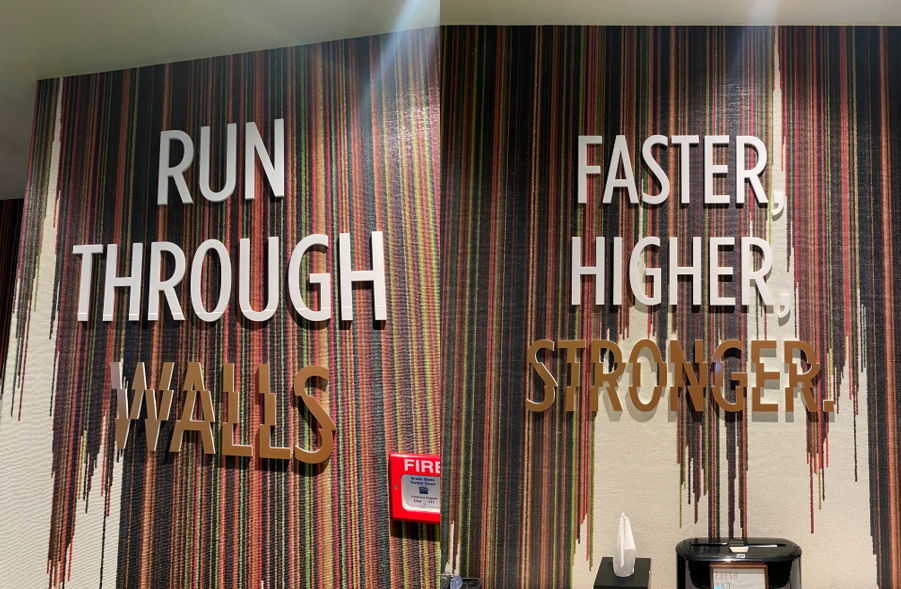Power is an interesting concept and one I think has been tainted from a gender perspective. It’s the topic of my most recent book and something I’ve wanted to explore for the women I work with for a long time now. It’s led me to redefine this word to PowHer. Let me explain what I mean by this.
Power has long been associated with those in positions of power, those who have power over others. Powerful figures in business or politics have long been masculine and many have sought to have power over others and not always have used it for good. It’s given power a bad name and taken us away from what power could and should be to us.
If we look at the dictionary definition it is genderless. Described as the ability to do something or act in a particular way. The capacity to direct or influence the behaviour of others or the course of events or to travel/move with great force.
I believe our power and potential are linked. Like potential energy from a physics perspective. It’s an ability that has the capacity to be developed for future success. Like the energy mass in a gravitational field – the charge. If only we realised we all have this power within us capable of propelling us towards our potential. In fact the word potential in Latin origins comes from potentia meaning power.
I believe power is something that comes from within. It’s less about power over and power from. When we stand in our power it comes from us and through us. It’s not something we need to have over others. It’s about stepping into the spotlight and owning our brilliance and changing the way we relate to the word power.
Mary Parker Follet was a world leading guru in the leadership space well before women were allowed to even speak into that space. It’s probably why most of us have never heard of her. Interestingly Peter Drucker who is very famous in the same space points to her as his guru and yet rightly points out the world forgot about her work in favour of celebrating the men who later made the same points.
She talked about this concept of power with rather than power over and I believe that’s the feminine version of power. It’s a shared power, a united force for the same goal. It’s not a dominant, I must win at the cost of you.
I believe this power with is also a power from within. It’s often not loud or forceful yet just as impactful. It’s an inner power. You know the kind of power I’m talking about. You sense it from those who have it. It oozes from them before they’ve even begun to speak. It’s a presence, an inner knowing, a way of being.
Power from within is our mental power. Something a master zen monk may have without any physical muscle tone whatsoever! It’s our ability to regulate our emotions, overcome challenges and remain resilient. It doesn’t matter how physically strong we are if this isn’t something we’ve mastered. This is where the real power is and something that’s often untapped.
We are often more powerful than we think but can give it away, fear it or under estimate our own power. It’s common for women to dim our light to make others feel better. Or to be afraid of power because we’ve been told it’s masculine or we’ve had a negative experience with it in the past.
If power has been held over you as a form of dominance it’s not surprising that we might have developed an unhealthy relationship with it. So often we’ve seen powerful female leaders or athletes referred to in derogatory terms as if this power is a negative not a positive force. The same power in her male counterparts though is celebrated.
There are longstanding stereotypes that associate power with masculinity and assertiveness, while femininity is often associated with passivity and submissiveness. These stereotypes can make it harder for women to be seen as powerful without being judged harshly or experiencing backlash.
Women who assert themselves or display strong leadership qualities are often judged more harshly than men in similar positions. Women may be viewed as aggressive, bossy, or unlikeable for displaying the same behaviors that are expected and celebrated in men. Women are often underrepresented in positions of power, this can create a perception that women are not capable of wielding power or that they are not suited for leadership roles. Despite our experience is showing us different, just consider the different covid responses from countries led by women and men.
You can see why we might have a difficult relationship to power or be too keen to give it away when you see the societal constructs and generation baggage it comes with! I believe our inner power though and our feminine power with is key to our success and something we should leverage more.
I believe in the Yin and Yang energies at play here. Both are powerful and yet both look different in intensity and force. I like to think of our feminine power like this. Sometimes it will be of a more yang quality and other times it’s so yin it goes unnoticed yet makes a massive impact.
There’s another form of power I think it’s important to talk about here too. It’s our inner power. In Māori know as Ahi ka, meaning inner fire. This is who we are at our core, it’s when we’re aligned to our values and connected to our purpose, it forms part of our identity and is how we show up.
Our ahi kaa is so important. When we’re in touch with who we are and coming from a place that is authentic and aligned, everything we do is so much more powerful. It’s our essence.
We lose power and our inner fire goes out when we’re misaligned, our values are contradicted, we can’t find meaning and purpose in what we do, or we second guess ourselves or we’re doing things we feel we should rather than what’s true in our heart. It also dims when we’re busy, tired, overwhelmed and feel like we’re not coping. The inner fire belongs in our gut and our heart which is why we can feel it here when things aren’t right.
When we ignite our ahi kaa we’re real, genuine, authentic. We’re firing and we perform better. It’s key to our sense of belonging and central to our health and such a powerful place to operate from too.
Of course when we stand in our own power and are comfortable owning our power we are less inclined to compare to others. To worry we’re not good enough, to second guess or doubt ourselves. We’re also able to accept our mistakes and learn from them without it ruining us.
It’s also less intimidating and harmful to others. Simply put, we don’t need power over others when we’re in touch with our inner power and can own our space and know what we stand for. It’s a more impactful place to come from and it’s also more enjoyable.
It took me years to figure this out. I went from thinking I didn’t have any power, to not wanting any because it thought it was negative to now being able to own my space and know my impact. In a comfortable way that keeps me humble though as doesn’t assume I’ve got it all figured out.
If this resonates why not join me for the monthly PowHer hour chat. A chance every month to connect with like minded women and non binary leaders and ask me anything. I’ll be hosting this free session at lunchtime on the last Friday of every month, would love for you to join us. Click here for details and the log on details.





















